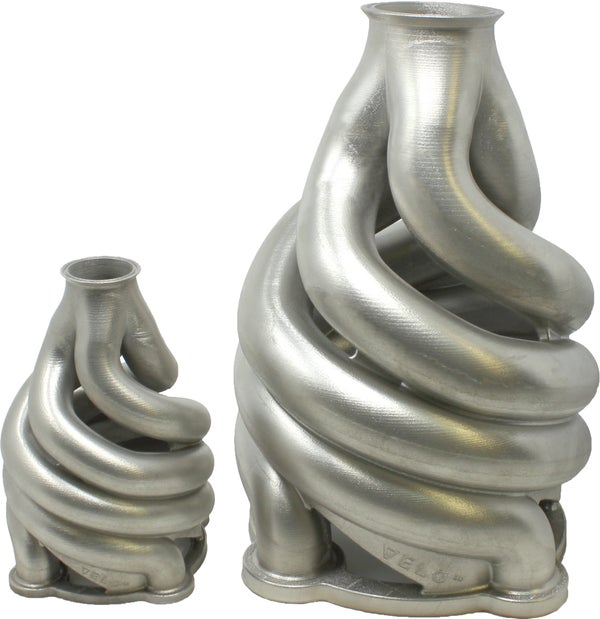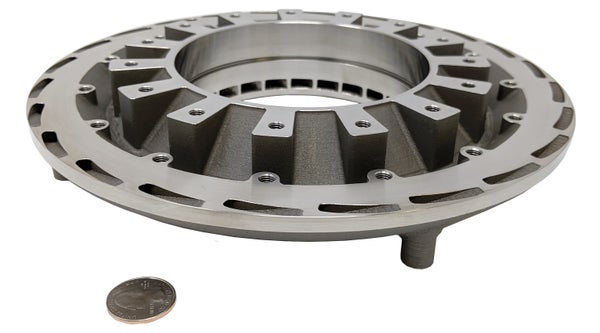This article was published in Scientific American’s former blog network and reflects the views of the author, not necessarily those of Scientific American
July 2019 marked the 50-year anniversary of the Apollo 11 moon landing. While the world has seen incredible technological and scientific strides since then, the broader space industry has been in stealth mode—exploring what’s possible, and what’s next, for humankind in space.
In 2018, the space sector grew to an incredible $3.25 billion industry. A number of different technologies are driving this rapid growth, but the most promising one is industrial-grade 3D metal printing (a.k.a. metal additive manufacturing). Once met with skepticism, 3D metal printing has proven itself to be a cost-effective and efficient way to develop production-ready parts, making it the new darling of the commercial race to space.
Designing hardware that’s made to last in space is no easy feat—outer space demands function, performance, and precision unlike anything required on earth. Traditional manufacturing often restricts engineers when designing complex hardware units. With the help of metal additive manufacturing, engineers are able to design and produce hardware that’s made to meet the challenges of outer space, with quicker iterations and faster product development.
On supporting science journalism
If you're enjoying this article, consider supporting our award-winning journalism by subscribing. By purchasing a subscription you are helping to ensure the future of impactful stories about the discoveries and ideas shaping our world today.
While it’s commonly believed that metal additive manufacturing is an entirely new form of technology, engineers have been practicing this method for roughly 20 years. Historically, metal additive manufacturing was rigidly categorized as a method for prototyping, not production. Given the strict regulatory policies of the aerospace industry, this transition was made especially difficult to accomplish.
However, in recent years, additive manufacturing has begun making tangible, validated strides in aerospace. For example, 3D metal printing was recently selected to manufacture flight hardware for Boom Supersonic’s XB-1, a jet that will allow travel at 1,687 miles per hour. Metal additive manufacturing allowed Boom to produce the necessary parts efficiently, with increased precision and freedom of design.
The shift in attitude toward additive manufacturing is a recent one. I myself once had little confidence in metal additive manufacturing production. Even as recently as 2012, I didn’t believe that an industry as regulated as aerospace was ready to integrate additive manufacturing into its rotation of technologies. In the last seven years alone, we’ve seen an incredible increase in our knowledge of what works and what doesn’t with regard to manufacturing.
The additive manufacturing industry has recognized the potential applications of this technology to the aerospace industry. The last few years opened up a larger conversation around the potential applications of additive manufacturing, which included a number of investments and a wave of research and development on the subject.
For example, we’re now entering an age of commercialized space travel. Privately owned companies are now fiercely competing to develop their own satellites using additive manufacturing—some companies hope to launch as many as 100 satellites per day. Additive manufacturing can touch an array of industries, though its potential went largely untapped for years due to lack of access and funds for R&D efforts.

Credit: VELO3D.
The increased use of satellites gives us the opportunity to gather terabytes of information about the planet we couldn’t receive otherwise, including data for the purposes of national security, agriculture, supply chain management, and more. Metal additive manufacturing has sped up the process, allowing these companies to print parts in just a few days.
Another big change enabling the widespread adoption of metal additive manufacturing is the advancement and increased sophistication of the software systems that model parts before printing. The combination of metal additive manufacturing and advanced software systems gives engineers the opportunity to design high-performance parts that require a much simpler manufacturing process than traditional methods of manufacturing. The advancements in software have greatly increased efficiency and reduced the rounds of prototyping necessary, creating numerous opportunities within aerospace.
Additive manufacturing combines production speed, complexity, and quality to quickly produce parts that can withstand the high demands of the elements of outer space. Although traditional manufacturing may ultimately produce similar parts, the process and workflow are bogged down with multiple rounds of prototyping—severely slowing the industry’s progress. To put it succinctly: Traditional manufacturing can still produce acceptable parts and drive commercial space travel. Additive manufacturing will just get the industry there much faster.
The ultimate goal of metal 3D printing in this industry is to expedite the development of the sophisticated technology that is necessary for this new wave of commercial space exploration. By ensuring that parts are made efficiently, without requiring excess rounds of prototyping, engineers can develop high-quality parts much faster, leading to greater opportunity in space.
